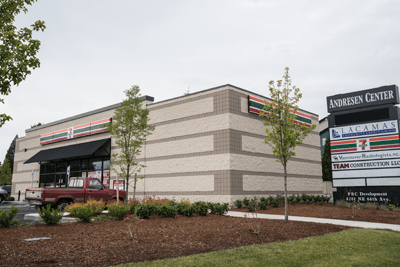As the Federal Reserve last week maintained policy positions designed to keep interest rates low, commercial real estate professionals in Clark County see the ongoing monetary policy as constructive, but lacking broad economic power to truly improve the current real estate climate.
In last week’s interest rate statement, the Federal Reserve remained committed to keeping the federal funds rate “exceptionally low” at least through late 2014. Additionally, the Fed committed to an extension of its Operation Twist bond purchase program until December.
Under the extended Operation Twist, the Fed will exchange $267 billion in short- to medium-term bonds for longer dated securities, with the intention of driving long-term interest rates lower.
At Coldwell Banker Commercial in Vancouver, agent Jim West said that the bond purchases will keep pressure on interest rates, which “allows the banks to rebuild their capital bases.”
“After they have time to write off some of these bad real estate deals, eventually they get back to where their ratios are correct, and they can loan again,” he said.
West thinks monetary policy has been effective at helping stabilize the bigger banks, and sees the commercial market making steady progress.
“More and more people are getting into the buying mode, and I think that will continue,” he explained.
West added that while low rates are great for borrowers, they have been “devastating for savers and those who rely on savings for income.” He also commented that commercial lending remains restricted at troubled local banks.
Local experts see the central bank as an important, but limited, actor in efforts to improve the economy. Vancouver’s Roger Qualman, of NAI Norris, Beggs, and Simpson, acknowledged the Fed’s dual mandate of price stability and maximum employment, but said the Federal Reserve “has limited tools that function better when it comes to price stability.” Low interest rates, he said, are essential right now.
There is broad agreement among local real estate professionals that rates must be kept low. But with the 10-year Treasury at 1.61 percent, long-term rates are already exceedingly low, and have been for some time. Rather than interest rate policy, local experts are highly focused on the employment market.
Terry Phillips of the Phillips Group said “It all has to do with creating jobs at the small business level.” Phillips noted that without a healthy employment environment, local businesses have fewer customers, leading to trouble paying the rent. Lower rents lead to lower valuations, which lead to underwater borrowers.
“There is lack of confidence in the market, and that’s keeping a lot of people on the sidelines,” said Phillips. “There is a lot of money out there, but the uncertainty since 2009 and the continued uncertainty is what keeps people out of the market.”
This uncertainty exacerbates poor credit conditions, according to Phillips, as lenders in many cases look for highly favorable loan-to-value ratios and signed leases before committing to new loans. Meanwhile, said Phillips, “Billions of dollars of real estate loans are coming due in the next couple of years, either because they were on a five-year or a seven-year adjustment.” The number of underwater borrowers raises the potential for defaults.
Indicating the Federal Reserve’s awareness, Chairman Ben Bernanke described the situation last month:
“Financing conditions in the commercial real estate sector remain strained as fundamentals including high vacancy rates, depressed property prices, and the poor quality of existing loans, continue to be weak.”
Despite the concern, several reliable price indicators show a steady rebound in the sector since 2009. The MIT Commercial Real Estate Transactions Based Index tracks properties across the country owned by pension funds and large institutions. The index shows a slow and steady climb off of the credit crisis lows since 2009.
West proposed that while the lending environment continues to be tight, it is slowly improving. He noted that the pool of qualified commercial borrowers is increasing locally, and banks are gradually getting healthier. But to free up more capital for commercial projects, he said, investors and lenders want to see better economic numbers.
“If you have employment, you have retail spending,” noted West. “A lot of commercial construction is built around retail spending.”
West pointed to 192nd Avenue in Vancouver as an example.
“We have seen a ton out on 192nd, which is probably the hottest retail and office building area all of the Portland metro area.”
Pillips agreed, “If you are in the right areas, you see upticks in retail. Certainly around 192nd, the bloom is on the area because we have jobs there, people who want to live there, great schools, all those things.”
In areas of good employment and demand, funding becomes much more readily available through banks and other large institutions. For example, Qualman said he relies on life insurance companies almost exclusively for financing.
“Life insurance companies are loaded with money right now,” he said.




